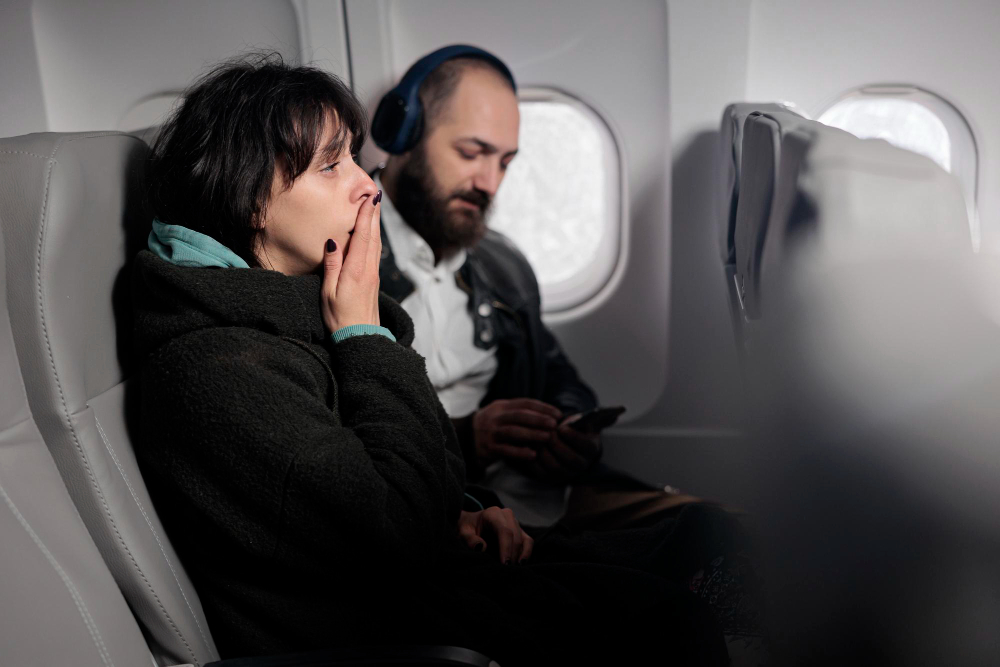How to avoid jet lag is a common concern before any long-haul flight. Jet lag occurs when the body clock falls out of sync with local time, especially on eastbound trips. The good news: with planning, smart light exposure, and a few simple habits, it is possible to minimize jet lag and enjoy the trip from day one. EAS Barcelona, a pilot school in Sabadell (Barcelona), outlines the most effective steps below.
What jet lag is and why eastbound travel feels harder
The circadian rhythm synchronizes via light, sleep, meals, and activity. Flying west usually feels easier because the day extends; flying east shortens the day and is tougher. The intensity of jet lag depends on the number of time zones crossed (it becomes noticeable beyond five), flight timing, and pre-trip habits around sleep, hydration, and stimulants.
A 3–4 day preventive plan before you fly
To start mastering how to avoid jet lag, prep the body in advance:
-
Shift sleep gradually. For eastbound travel, go to bed and wake 30–45 minutes earlier each day; for westbound, push times later.
-
Move meal times toward the destination schedule: shift breakfast, lunch, and dinner closer to local time.
-
Train at your “target” time. Moderate exercise at the time you’ll be active at destination helps anchor the new rhythm.
-
Reduce alcohol and caffeine 24–48 hours before departure to keep sleep flexible.
-
Plan day one. Block time for sunlight and an early dinner to accelerate adaptation.
Light and darkness: your most powerful tool
Well-managed light exposure is the core of how to avoid jet lag:
-
Eastbound (advance the clock): seek morning light at destination and limit strong evening light for the first two days.
-
Westbound (delay the clock): prioritize late-afternoon light and avoid very early exposure.
-
True darkness for sleep: blackout shades, eye mask, and a cool room.
-
Fewer screens at night: 60–90 minutes screen-free helps sleep onset.
In-flight strategies that truly help
For how to avoid jet lag on board, focus on four levers:
-
Hydration. Cabin air is dry; sip water every 30–45 minutes.
-
Smart stimulants. Skip alcohol; time caffeine only when useful (for example, near landing if alertness is needed).
-
Movement and micro-stretches. Stand up regularly and activate legs and ankles to boost circulation.
-
Short naps. 20–30 minutes if necessary; avoid long naps that disrupt the first local night.
Extra tips: choose an aisle seat to move easily, carry earplugs and an eye mask, and bring a light layer (cabins run cool).
On arrival: lock onto local time
The first 24–48 hours are decisive for how to avoid jet lag:
-
Sunlight + local breakfast. Take a 20–30 minute walk in the morning and eat on local schedule.
-
Nap wisely. Keep it to 20–30 minutes and never late in the day.
-
Early, light dinner. Favor lean protein, vegetables, and complex carbs; keep alcohol minimal.
-
Caffeine with intent. One cup in the morning and, at most, another early afternoon.
-
Consistent sleep routine. Fixed bedtime, dark and cool room, and no screens in bed.
Melatonin and sleep aids: when to consider them
Melatonin can help as a circadian signal when used at low dose and at the correct local time. If there are medical conditions or medications, seek professional advice first. Avoid strong hypnotics without guidance: they may harm sleep quality and slow adjustment.
Quick checklist: how to avoid jet lag in 10 steps
-
Shift sleep 30–45 min/day for 3–4 days.
-
Move meals toward local time.
-
Hydrate well before, during, and after flight.
-
Minimize alcohol and caffeine pre-trip.
-
Manage light (morning for east, late afternoon for west).
-
Sleep in true darkness; avoid screens before bed.
-
Move in flight and stretch.
-
Use short naps only if essential.
-
Anchor sunlight + breakfast on arrival.
-
Eat early and keep a fixed bedtime.
Conclusion
How to avoid jet lag is not about a miracle hack; it is about stacking small decisions—shift schedules, use light wisely, hydrate, move, and sleep with intent. With a short pre-trip plan and consistent habits on arrival, the body adapts faster and the journey feels better from minute one. For aviation training and flight-ready rest habits, EAS Barcelona integrates these practices into its professional approach.
